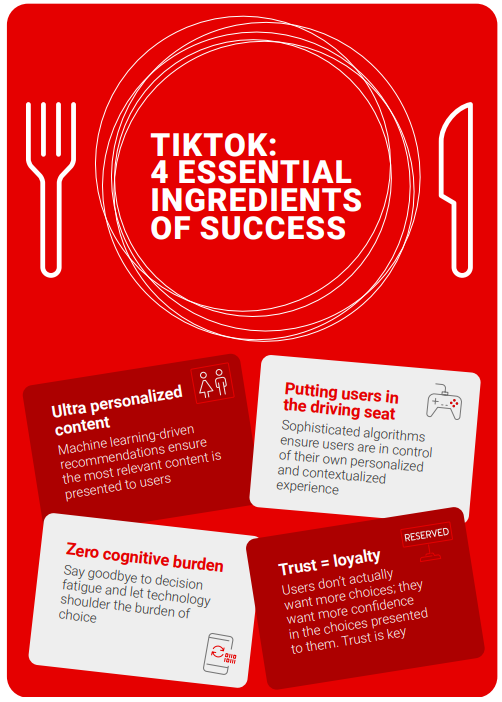In our airline strategy paper, we explored how Sabre’s end-vision is to provide airlines of all sizes with a flexible offer and order ecosystem that intelligently enables them to retail and distribute a broad choice of tailored offers across any channel. Orders can be fulfilled and delivered with ease on an open, flexible, and cloud-native platform, resulting in value creation for the airline at each step in the process.
In this first article, we take a closer look at the importance of choice and intelligence, using case studies from other industries to illustrate the value we believe they add for airlines and travelers in a modern, retail-powered world.
We can all agree choice is a good thing, can’t we? The retail sector is predicated on this very notion – that more choice equals greater consumer satisfaction.
An often-cited example of the benefits of greater choice is television viewing, and specifically the transition from basic broadcast television (limited choice of standard offerings being pushed to viewers with broadcaster in full control), to multi-channel cable or satellite (improved choice of viewing options made available to viewers with limited self-serve capability), to streaming content (wide range of viewing options catering to all preferences available on demand with viewer in full control). The range and volume of television content has increased dramatically in recent years and every niche audience can now find something for themselves. Of course, advancements in technology have played a major role in facilitating this change, but consumer demand has put wind in the sails of this exponential growth in choice.
Case in point: Netflix. Over the last decade, Netflix has grown from around 24 million subscribers worldwide to almost 10x that number. A key ingredient in their recipe for success has undoubtedly been choice – more specifically intelligent choice that gives consumers more of what they want. How do they know what consumers want? The answer lies in data science and experimentation. Algorithms filter content on an individual user level based on a range of data points, to ensure the most relevant recommendations are presented to viewers. Intelligence – in the form of data science and experimentation – combined with choice, has revolutionized our viewing habits, and consumers have responded in kind with unprecedented demand for such services.
But the use of data science in making choices more ‘intelligent’ doesn’t end there, and Netflix is far from the only company using a sophisticated recommendation engine. Amazon, YouTube, Spotify, Instagram, LinkedIn – the list goes on and on. More choice – or more precisely, more of the right kind of choices – is a good thing. Or is it? And are there ways of presenting consumers with fewer, but better, options that allow for more efficient decision-making?
Too much of a good thing
Have we now reached a point where there is too much choice? After all, freedom to choose also means freedom to doubt, or worse yet, freedom to make the wrong decisions. So much choice can leave us second-guessing the choices we make. Recent trends indicate a shift in consumer preference away from an abundance of choice, and towards a much more limited range of hyper-relevant options to choose from.
Gen Z, or Zoomers, are the first generation to take this desire for highly personalized and contextualized choice to the next level. They expect technology to shoulder even more of the burden of choice for them, demanding to see fewer choices but for those choices to be exactly what they want.
Let’s return to the example of Netflix. After more than a decade on an astonishing growth trajectory, subscriber numbers actually dropped in the first quarter of 2022. For all that Netflix has achieved through the broad application of data science and technology-driven recommendations, consumers are still faced with endless scrolling and myriad choices – and the inevitable burden of decision-making. In response to this, Gen Z and Millennials are increasingly looking to alternative sources for their entertainment fix. And it seems they’ve found it in TikTok.
Best practices airlines can leverage from Tik Tok’s success
Better, faster, easier. One of the driving forces behind TikTok’s success is their best-in-class use of data science and experimentation to remove the burden of choice for the consumer. While Netflix takes a handful of data points and turns them into a powerful recommendation algorithm, TikTok is taking hundreds of granular data points in real time and algorithmically refining them into something far more intelligent. This intelligence feeds into a unique and highly personalized experience for the end user. The unparalleled growth of TikTok is evidence of an emerging trend among younger consumers – they don’t actually want more choices; they want more confidence in the choices presented to them.
18–34-year-olds are being enticed away from Netflix by the almost decision-free, ultra-personalized user experience of TikTok. This age group makes up a staggering 80% of all TikTok users worldwide, which now commands more attention per user than Facebook and Instagram combined. In terms of viewership, in 2021 the estimated number of minutes watched on Netflix was 9.6 trillion. For TikTok that number was 22.6 trillion – more than twice as much.
The relevance of all this to the travel industry?
Millennials travel more than any other age group – they take more vacation days per year than anyone else and prefer to spend almost all those days travelling. We believe Zoomers show all the signs of following in Millennials’ footsteps to become the big spenders of tomorrow for the travel industry. 18–34-year-olds represent a lucrative potential revenue source, both today and in the future.To capture those travel dollars, providers need to lean into newer and better technologies that eliminate unnecessary choice and present travelers with only the most relevant options for them.
Zoomers are redefining traveler expectations.
Future-proof your business by catering to the needs of a new generation of travelers
From where they seek inspiration for travel, to what matters most when selecting an airline, to how they want to pay for travel, Sabre’s latest research shows that Zoomers (or Generation Z as they are also known) are breaking the mold. It is clear the way airlines have traditionally operated does not fully meet the needs of the digital-native, tech-savvy, 18–24-year-old age group. Airlines will need to evolve what they offer, how they offer it and how they deliver it if they are to keep pace with modern consumer expectations. Remember, today’s Zoomers are tomorrow’s high-earners, eager to spend their money on experiences that matter to them.
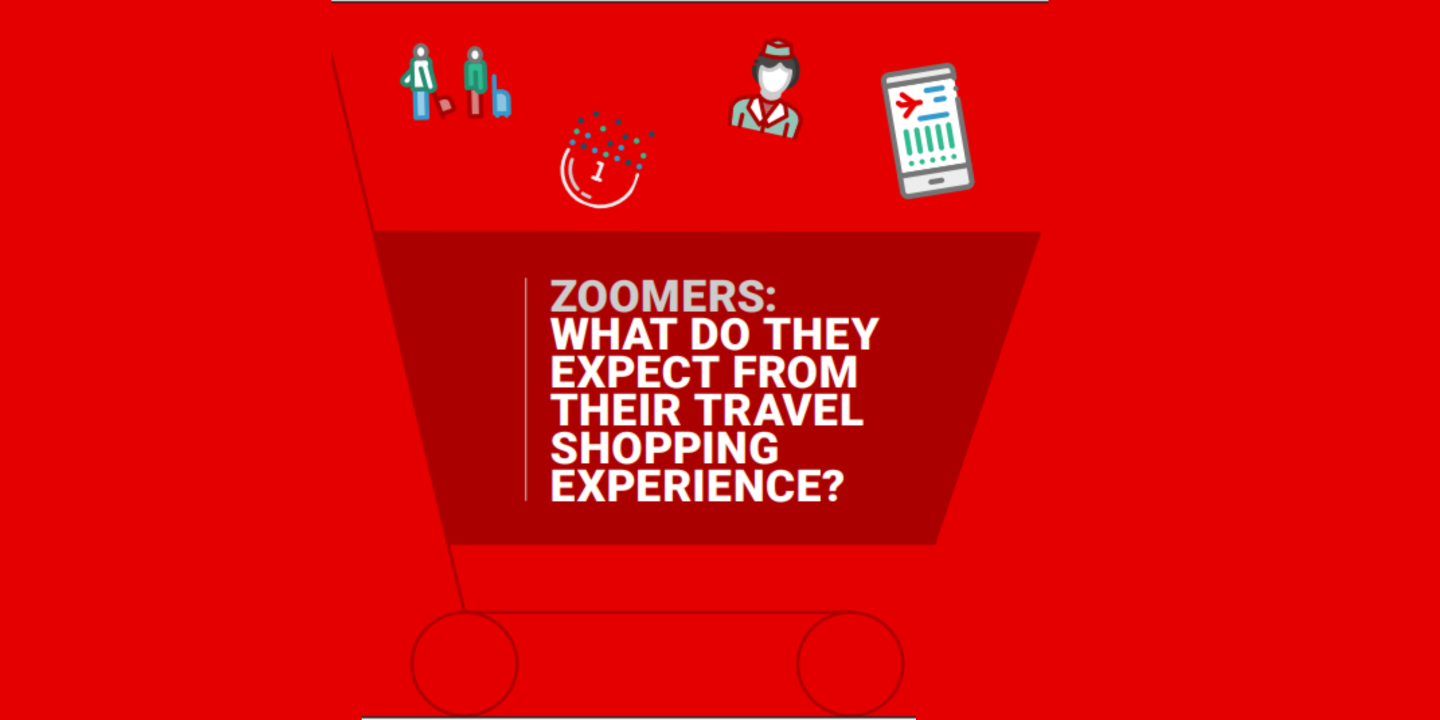
Younger travelers rank service as their number one priority when choosing who to fly with – more important even than cost – and they are willing to pay more to ensure they get the smooth travel experience they demand. More than one-third (34%) of young travelers cite good customer service as their top priority when choosing an airline, with cost as the number two factor at only 26%.
Sabre believes the evidence points to a new generation of travelers with higher service expectations. They know what they want and are prepared to pay for it – good news for airlines with compelling service propositions seeking to realize higher-margin returns.
Choice of contact methods when shopping and booking
The way Gen Z travelers want to shop and purchase travel also defies the status quo. When shopping and booking flights today, young travelers find everything more challenging than other age groups – from poor price transparency and a lack of customer support, through to limited payment options and a distrust of the service provider. So much so, that this tech-savvy group are more likely to seek human interaction and book and pay for travel over the phone than the average survey respondent – evidence that airlines are missing the mark in terms of the online retail experience that Zoomers have come to expect in other areas of their lives.
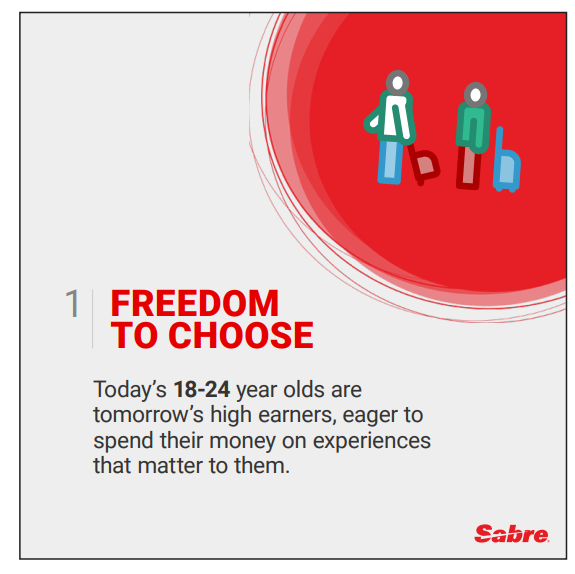
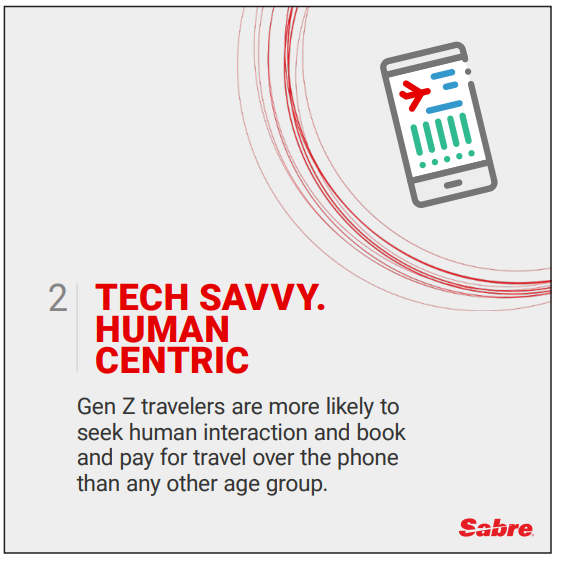
Choice of payment methods that meet their needs
When it comes to paying for travel, they are challenging accepted norms. Unsurprisingly, credit cards remain the most popular payment method. But younger travelers indicated an increased preference for ‘alternative’ payment methods compared to older people. In fact, more than one-fifth of young travelers prefer crypto as their payment method of choice.
Choice of when and how they prefer to be serviced vs self-serve
Self-service technology is usually regarded as a welcome convenience that has become part of modern life, from grocery shopping to fueling a car. Not necessarily so for young travelers when it comes to typical airport tasks such as checking-in, obtaining a boarding pass, or upgrading and making changes to trips. Surprisingly, 18–24-year-olds are more likely than the average traveler to work with an agent at the airport for such tasks; further proof that expectations are changing, and airlines must adapt and evolve in the future world of order management if they are to capture their share of the sizeable Gen Z wallet.
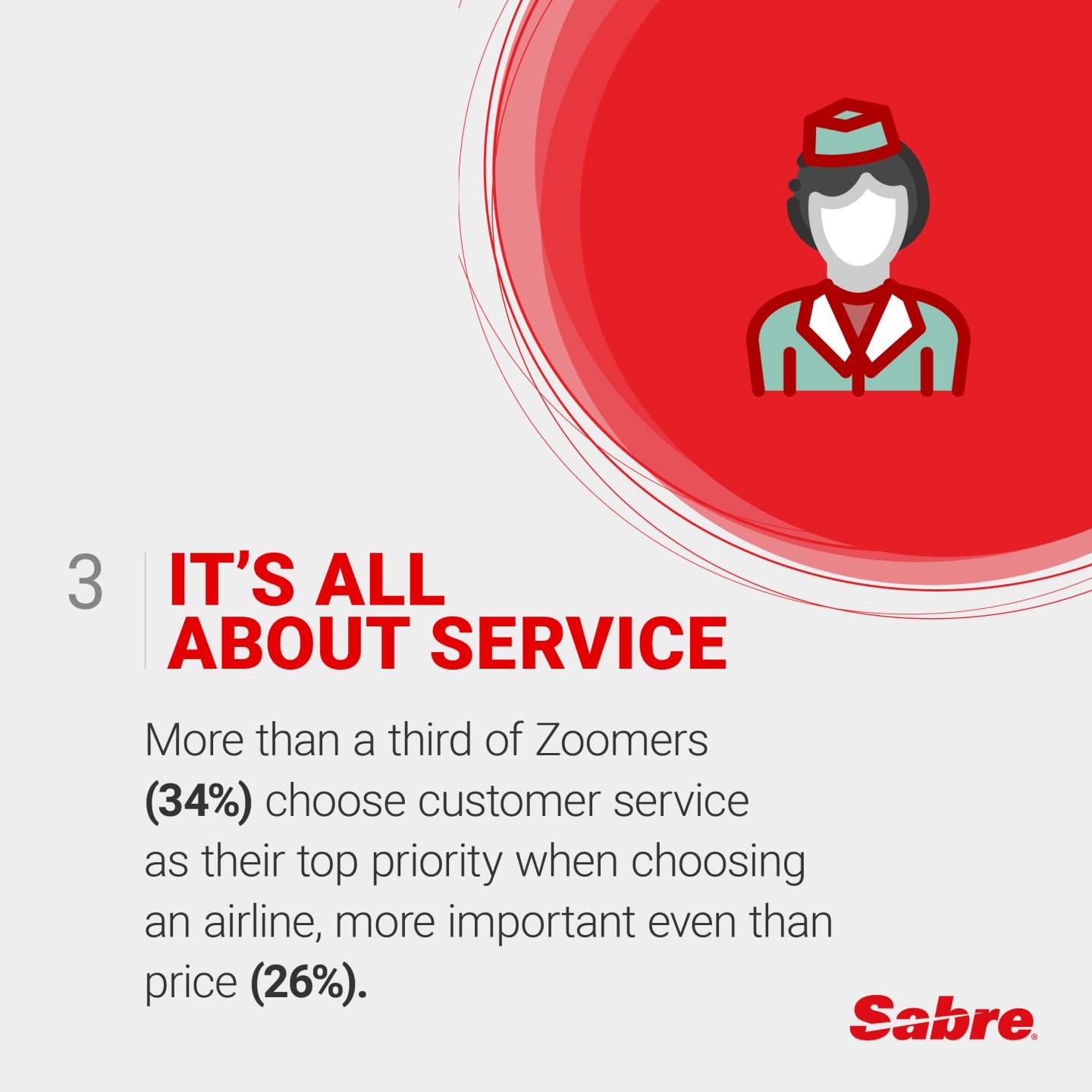
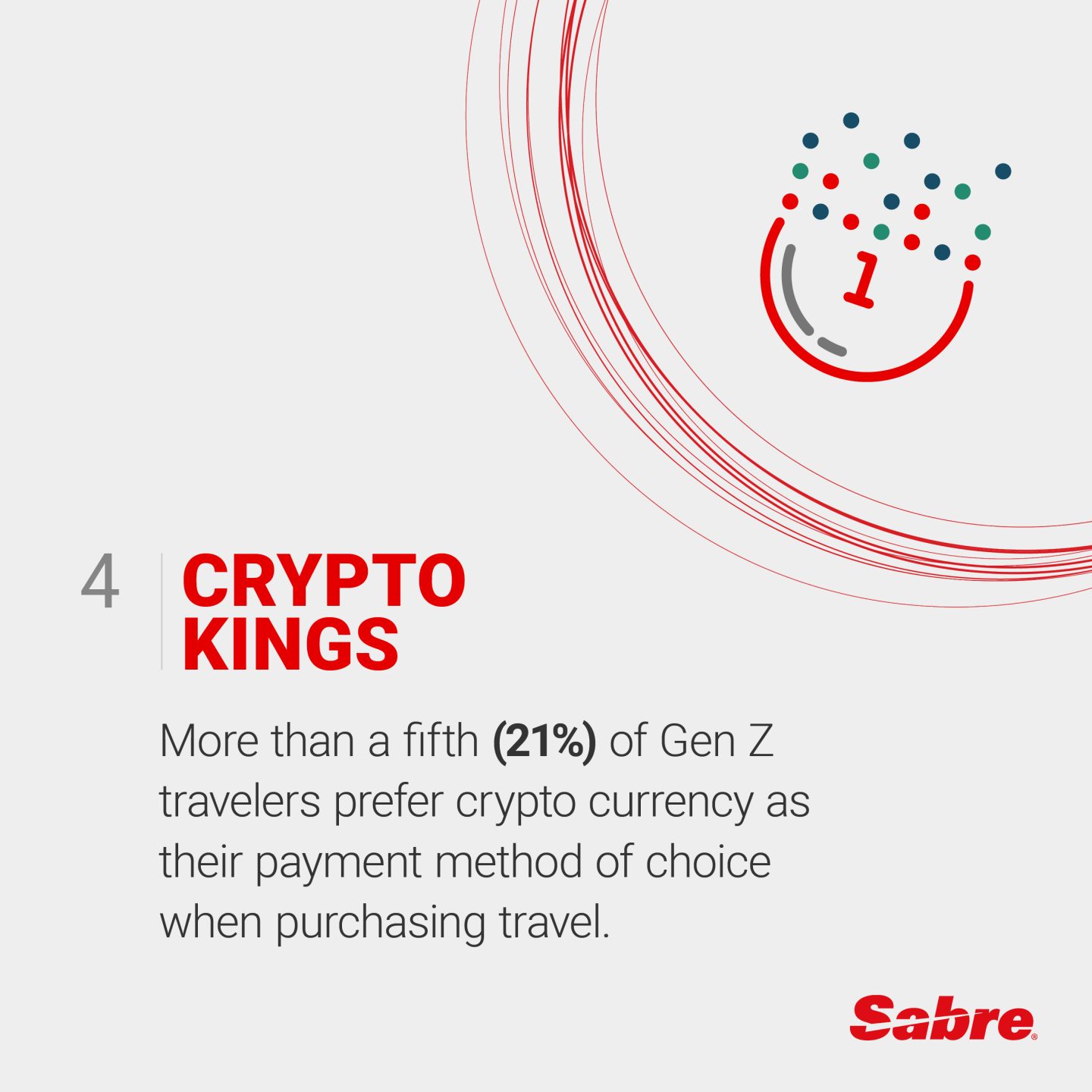
In summary, the next generation of travelers expects a travel experience that caters to their preferences. That may mean the ability to speak to an agent at the airport to accomplish certain tasks, the convenience of an app to check-in for a flight or the option to purchase travel add-ons over the phone – whatever they perceive to be their preferred way to get things done. The best news is that price is a secondary consideration for this age group; they are willing to pay to have things their way, and those airlines that can sell and service these requirements stand to maximize revenue from this lucrative and long-term target market.
The last 20 years have seen a fundamental shift in societal mindset and human behavior. Property ownership has given way to leasing. Car ownership has been superseded by the concept of ‘mobility’. Short-term flexibility is preferred to long-term stability. Analog ways of working and living have been surpassed by digital solutions. Simply put, life is digital and transactional for the younger generation. The insight, and huge opportunity, for airlines in all of this? Gen Z has the means (willingness to spend disposable income) and motive (desire for travel experiences tailored to their needs) to spend more on what matters most to them. The airline industry focus now needs to be directed towards how to deliver the seamless retailing and servicing experience that this new generation of travelers demands. Succeed in creating the right experience and the rewards of traveler satisfaction, customer loyalty, enhanced profit margins and increased revenue will follow.
Taking the guesswork out of travel offers: technology holds the key
Today’s travelers – and the travelers of tomorrow – demand more from their travel experiences. They expect a similar experience when researching, booking and purchasing travel to those in other areas of their daily life. Better, faster, easier. Seamless retailing experiences powered by highly intelligent travel choices will become the backbone of the industry in the coming years. The use of technology to better refine content and build consumer confidence in the options presented will improve the relevance of the choices presented, refining them down to only what is most likely to meet their specific needs – and therefore convert into revenue for travel providers.
Sabre’s own research supports what we’ve seen in other industries. Having too many options to choose from was a top three challenge for consumers when shopping for travel, potentially leading to decision paralysis with consumers being unable to commit to making a purchase.
Thankfully, data science can address this challenge. Sabre’s partnership with Google – and specifically the application of Google’s best-in-class artificial intelligence and machine learning (AI/ML) algorithms in conjunction with industry-leading data science and experimentation protocols – provides a solution to the ‘choice’ dilemma and sets us apart from any other provider in the market today. We know from the example of Netflix and TikTok that not all data science solutions are created equal, and our industry-leading technology removes the guesswork and replaces it with an intelligent alternative. For Sabre, and our airline partners, it’s simple: the most relevant offers drive the highest conversion.
In this article:

